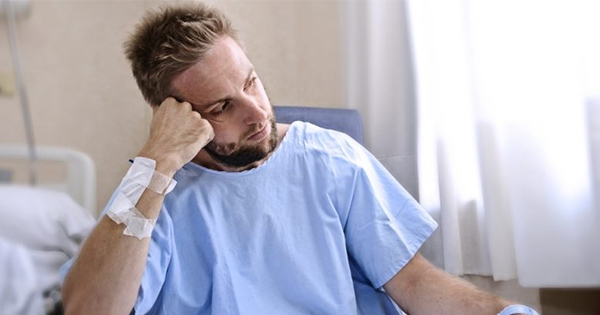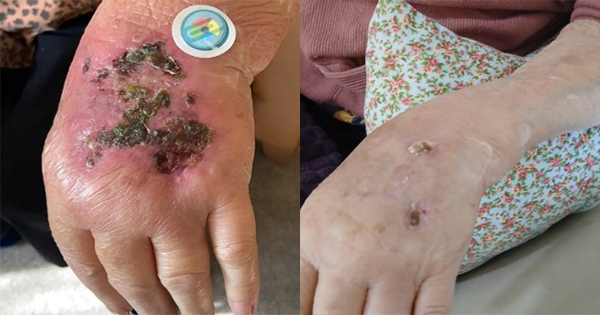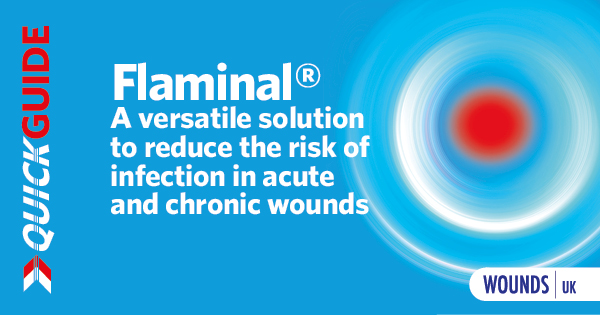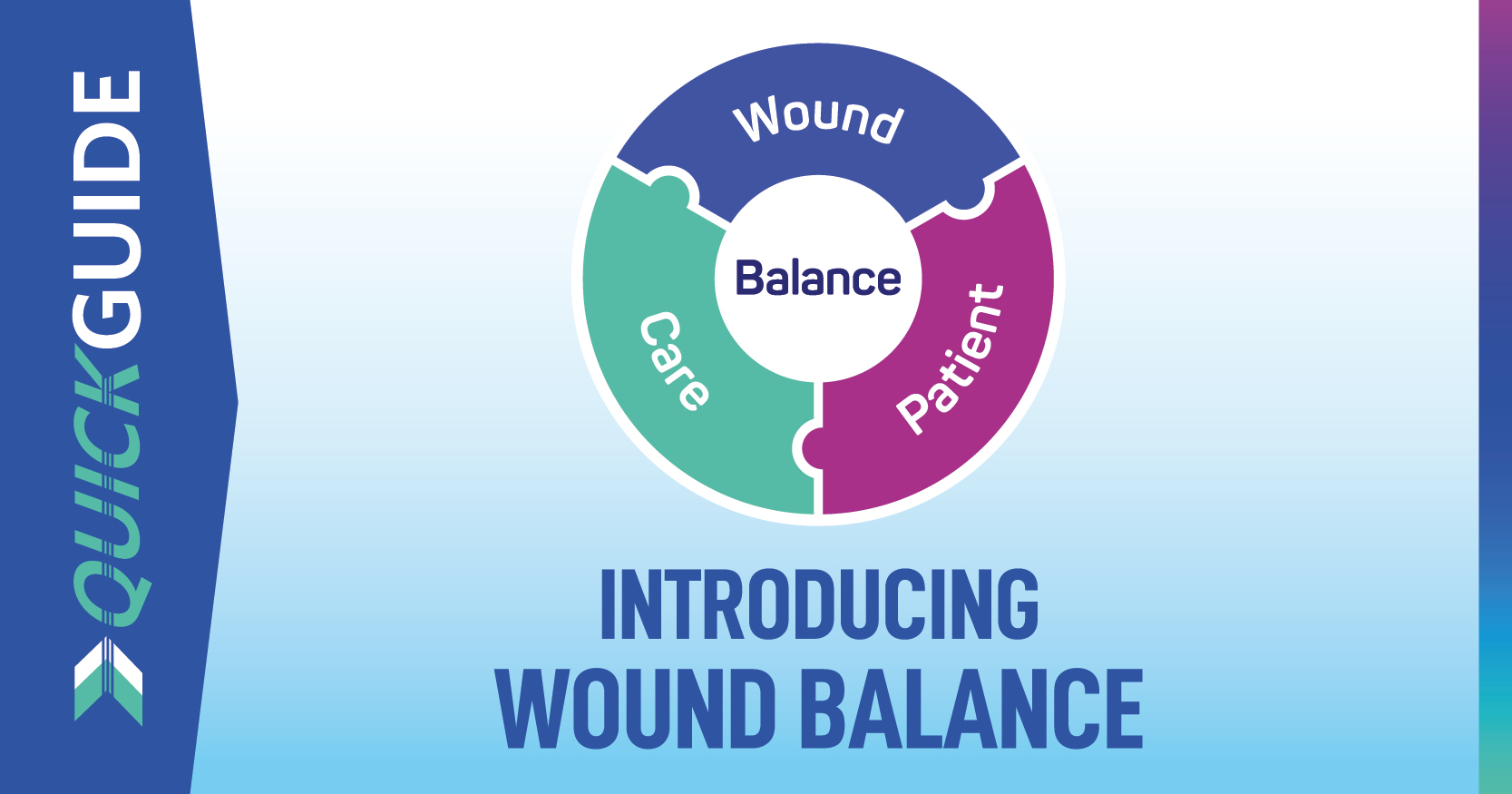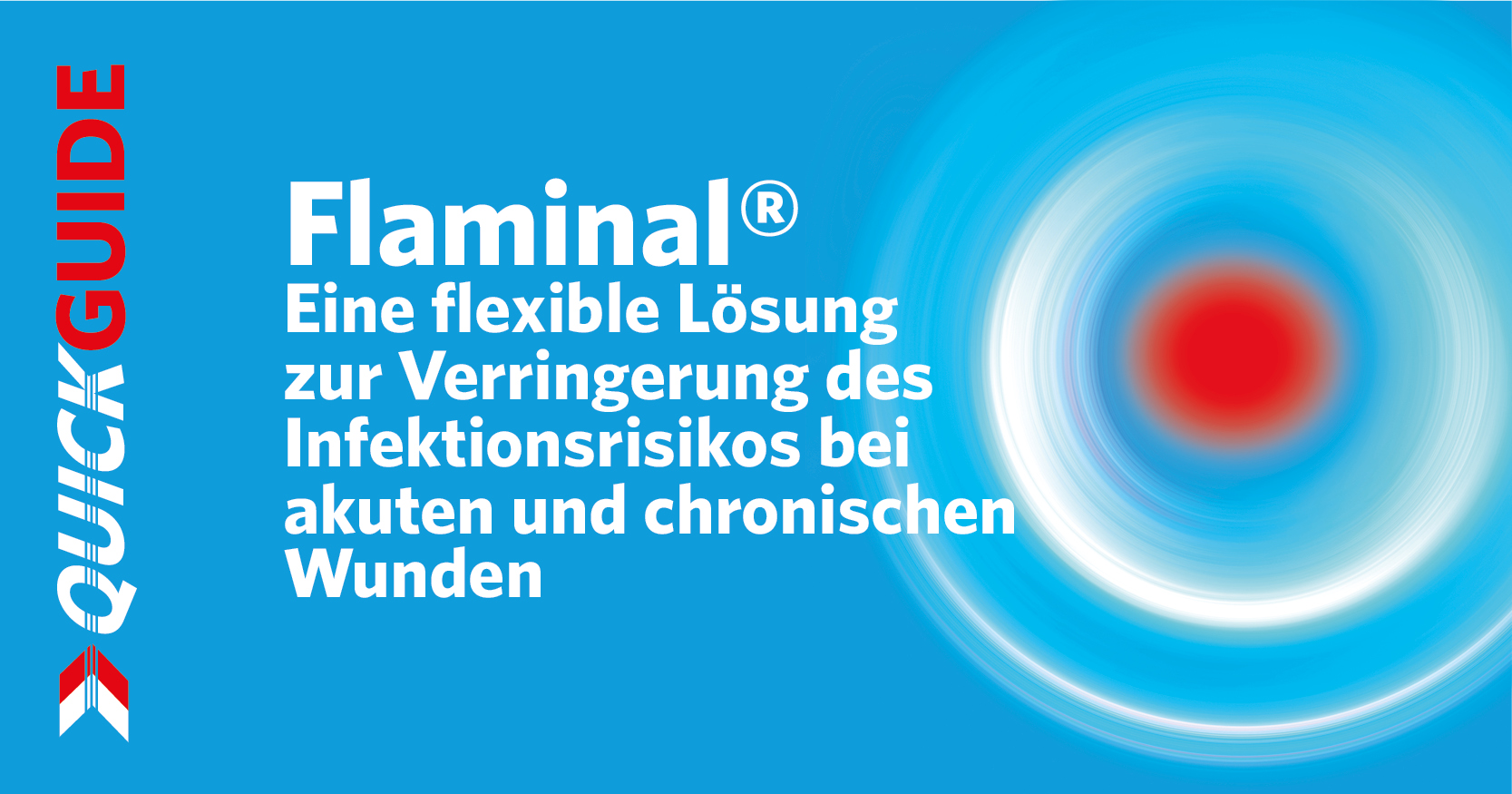A wound is defined as a break in the anatomical structure of the skin, which could fail to heal through the normal timely process (Frykberg and Banks, 2015). A non-healing wound is defined by the failure to reduce in size by 40% with optimum treatment during a 4-week duration of optimum care (Gwilym et al, 2022). The estimated cost of wound care between 2017 and 2018 varied between £2.3 billion (GOV.UK, 2018) and £8.3 billion (Guest, Fuller and Vowden, 2020).
Patients with chronic, hard-to-heal wounds are increasingly likely to have multifaceted comorbidities, which could impact normal wound healing and individual’s psychological well-being (Hussey and Young, 2020). Psychological stress can be experienced by individuals under physical, mental and emotional pressures, created by a variety of stressors (National Cancer Institute, 2023).
The best practice statement issued by Wounds UK, (2022) outlines psychological stress as a patient-related factor that can contribute to delayed wound healing. By carrying out a holistic assessment of patients’ wounds, access to the recommended treatment at the appropriate time is achievable, thus, in turn, aiding clinical decision-making (Wounds UK, 2022).
If wounds fail to heal in a normal time scale, psychosocial assessment of the patient is essential (Gouin and Kiecolt-Glaser, 2011). Not assessing wounds holistically can create a delay for healing as optimal care may not be provided (Meagher, 2024), which in turn, increases the risk of infection, pain and impact on quality of life (Ousey, 2012).
Aims
The aim of the study was to enable developments in wound assessment within the investigator’s NHS Trust by providing a deeper understanding of tissue viability nurse specialist’s (TVNS) views on the potential role that psychological stress has on delayed wound healing.
Methods
Case study methodology (Thomas, 2021) was used to explore and analyse the perspectives of TVNS, working in an NHS Trust in the southeast of England, regarding the impact of psychological stress on delayed wound healing.
The participants were purposefully selected (Robson, 2024). Whilst this limited the study to applicability or transferability, rather than generalisability (Polit and Beck, 2010), the deliberate selection (Reed and Santini, 2022) of participants from the tissue viability team, who had knowledge or experience of the area being investigated, ensured a data-rich source of information. To avoid placing potential participants under undue duress to participate, recruitment was carried out by a third party (Administrator), who explained that involvement was voluntary and withdrawal at any time acceptable. The Participant Information Sheet explained the removal of data after a particular point would not be possible in line with General Data Protection Regulations (GDPR) (Information Commissioner’s Office, 2023). None of the participants withdrew. There were no financial incentives to take part. Anonymity was preserved by excluding any mention of identifiable information, and through the assignment of participant numbers rather than names (King et al, 2018).
Qualitative interviews
To permit flexibility and to permit the exploration of deeper insights, the data was collected was via six semi structured, face-to-face interviews (with one being online), from all of those who volunteered to participate (King et al, 2018). Prior to conducting the interviews, the questions were piloted and refined. The interviews were conducted then between September and October 2023 in the TVNS place of work. Each of the interviews followed the same four questions with the prompts to explore each area in greater detail.
Once transcribed, participants were invited to review their transcripts and to confirm accuracy of the interview (Reed and Santini, 2022). Following any amendments, the final version of the transcription provided the basis on which to conduct the analysis (Robson, 2024).
Ethical approval
Ethical approval was granted from the University of Kent (UoK). The NHS Health Research Authority (HRA) decision tool was completed, which confirmed NHS ethics approval was not required.
Analysis of the data
Green et al (2007) four stage model was used for the thematic analysis (TA) of the data. The analysis was interrelated (Pope et al, 2000) between the first and second authors. The analysis of data was shared with the participants. Each participant was request to review the analysis and ensure that their contribution had not been misinterpreted or misrepresented (Morse et al, 2002). Four stages of data analysis, data immersion, coding, creating categories, and identifying themes, is outlined in Table 1. As a consequence of the TA, the development of five overarching themes were identifying, which were:
Psychological and physiological effect on the patient’s life;
- Education and Knowledge;
- Wound healing and psychological impact;
- The wider mental health impact;
- Multidisciplinary approach to wound care.
Theme 1: Psychological and physiological effect on patient’s life
Theme 1 refers to the psychological and physiological impact on patients living with a wound. Participants believed that patients living with wounds were impacted both psychologically and physiologically, affecting their mental well-being and physicality in terms of social isolation, effects on body image and concerns about what others may think.
From the data, it was apparent that participants had observed/witnessed the effect of living with wounds on patients themselves, but also on their caregivers/loved ones.
“… they feel that they can’t work because they’ve got maybe leg ulcers and so that has an impact on their economic status… if they don’t want to work, they just won’t go. Also, socially as well, there’s a lot of social isolation. A lot of patients would be very reluctant to go out because of the concerns regarding the smell or odour of their wounds…” (P2).
Theme 2: Education and knowledge
The theme of education and knowledge referred to devising an education programme for all healthcare professionals who are treating patients with wounds to expand and enhance their knowledge.
The participants linked the disparity of education to the varied levels of knowledge and lack of formularised training/support for TVNS and non TVNS staff. The participants considered that providing some standardisation and ability to replicate the training would in turn, enhance their knowledge and would give TVNS more confidence to provide psychological care:
“… I think the challenge I have and we have is that there’s nothing formal, and because we don’t have training and it’s not formal, it’s down to the clinician and maybe their knowledge, skill and experience as to how that’s assessed…” (P6).
Theme 3: Wound healing and psychological impact
Theme 3 raised the psychological impact of wound healing, particularly if holistic assessment was not conducted and patients disengaged from their care, believing their wounds would not heal.
Participants expressed the belief that without correct interventions and support the psychological impact could be greater than the wound itself:
“… I think it actually can be more significant than maybe the wound itself and despite all your best interventions, if you do not deal with that aspect you’re kind of wasting your time…” (P6)
“… Because like I said at the start with that vicious cycle that we do know that stress affects healing rates…” (P1)
Theme 4: The wider mental health impact
The wider mental health impact explored ensuring patients have timely access to support mechanisms and services, such as counselling and talking therapies. To discover the impact their wounds are having on their lives and the ability to access assessment and support.
“… I think that I would need something just to help support and I would need to know or I could know more about where to signpost these patients. So, if they do say actually I do feel like this, I’m more confident in being able to signpost….” (P1).
Theme 5: Multidisciplinary approach to wound care
The multidisciplinary approach to wound care was described by participants which included, TVNS having appropriate access to specialist healthcare professionals in mental health, who could provide TVNS support, as well as providing care to patients living with wounds. Ensuring nursing time is spent fully assessing and understanding the needs of the patients living with wounds.
Four participants expressed that the role of TVNS may have more impact during their wound assessment with the patient due to having the luxury of time during their visit. By providing more time to the patient the TVNS might obtain greater in-depth history from them, which can be filtered into the multidisciplinary team.
Discussion and Conclusion
The complex ideas emerging from the discussion are more accessible by using a five-layered infographic model, created as part of the project, depicting the relationships between the themes. The model is detailed and therefore split into layers (Figure 1).
This study highlighted that TVNS who participated in this study routinely cared for patients who were experiencing the psychological impact of living with a wound as a result of malodour, pain and exudate. All these elements have the potential to lead to psychological complications for individuals with wounds, which in turn, have the potential to impact wound healing. The impact on an individual’s quality of life is consistent with Balikji et al (2022), who highlighted that wounds can have an effect on a patient’s mobility, willingness to leave the house, malodour and impact on individuals’ quality of life.
Patients living with these additional stressors, such as wound odour, social isolation, pain and loss of ability to work are exposed to increased stress and emotional states. This reflects the findings of Balikji et al (2022) who identified that stressors could impact individuals’ emotional states, leading to anxiety and/or depression. Both elements could impact wound healing physiologically and affect health outcomes.
From this study there is an evidence of lack of education and training on the topic. There is a disparity of what information is being shared or formalised. This study reinforces the importance of education for staff and TVNS caring for patients with wounds. However, translation of knowledge and education into practice takes time and requires training, raising awareness and educating staff and patients.
This project demonstrated a consensus of opinion from the participants that if patients are not assessed holistically to identify a potential psychological impact of living with a wound, then this might affect the wound healing process. This was corroborated by earlier literature. Hussey and Young (2020) suggest that the use of psychological tools is required when assessing wounds to help with ongoing frustrations associated with wound healing, which, in turn, will engage patients in their healing journey.
Implications for practice
Participants expressed the view that the management of the physiological element of wound care is multifaceted. As such a multidisciplinary team of professionals is required to successfully manage this element of care, due to the requirement of multiple specialities, knowledge and skills. Although there were differing responses from participants about their level of confidence in assessing psychological factors with patients, a consensus of the need for access and onward referral for special support/intervention was expressed.
Directions for future research
The project provided findings in relation to lack of standardisation in education in wound care. Although literature supported the viewpoints of the participants, suggesting the importance of education, it lacked any consistency around the requirement to educate on the psychological element of living with a wound or how to effectively manage this group of patients. There was also a lack of underpinning literature regarding access to mental health services for individuals struggling with the physiological elements of living with a wound. With the potential benefit of a support group-style approach being available for patients living with wounds to have a safe space to discuss thoughts and feelings.
What this project adds
This small qualitative case study offers context-specific insights and valuable perspectives to inspire further inquiry and discussion. However, due the limitation of the exploration of unique contexts and individual experiences, and due to the size of the participant group, the findings are not generalisable. Nevertheless, this study offers potential applicability to those who are interested in exploring practice related to wound care. It is hoped that sharing this case study, will add to the larger body of knowledge, and foster collaboration and dialogue, and further enquiry, and ultimately leading to a more comprehensive understanding of the topics and advancements in the field.

